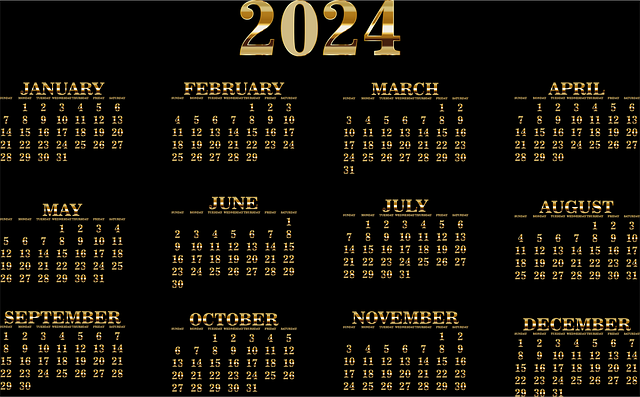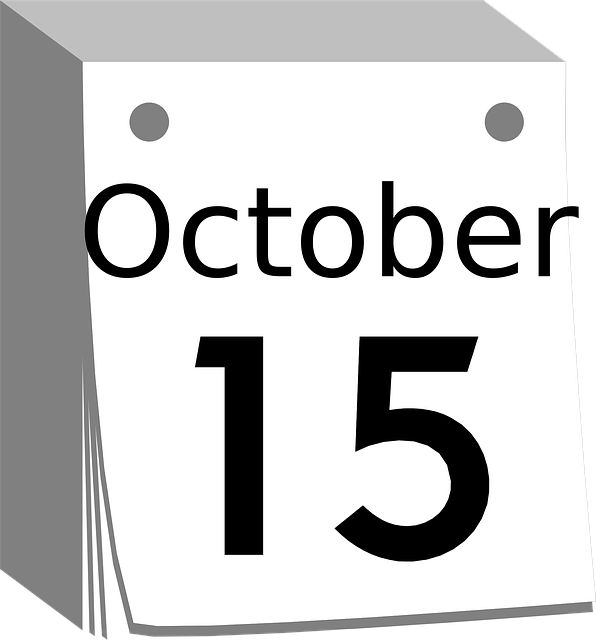Leap years, occurring every four years, add an extra day to February, synchronizing our Gregorian calendar with Earth's solar year. This adjustment ensures seasonal consistency, aligns important dates, and affects event planning, agriculture, and more. Historical civilizations used similar mechanisms, emphasizing the significance of accurate calendar dates for reliable scheduling and coordination across sectors.
A leap year, a unique phenomenon in our calendar system, occurs every four years, adding an extra day—February 29th—to align celestial time with Earth’s revolution. This brief adjustment seems trivial but significantly impacts time tracking and cultural events. From ancient civilizations marking significant dates to modern-day digital calendars, understanding leap years is essential for accurate scheduling. Explore the definition, history, and future considerations of these calendar anomalies, delving into the science behind our timekeeping methods.
- Leap Years: A Calendar Oddity
- Definition & Purpose Explained
- How Leap Days Are Added
- Impact on Time Tracking
- Historical Perspective
- Future Considerations & Science
Leap Years: A Calendar Oddity

Leap years are an intriguing quirk in our calendar system, adding an extra day to our year every four years or so. This oddity arises from the fact that our solar year—the time it takes for Earth to complete one orbit around the sun—is slightly longer than 365 days. To keep our calendars aligned with the actual solar year, we occasionally insert a leap day, February 29th, into our dates.
This adjustment is particularly significant for event ticketing deadlines, movie release dates, and even agricultural planting seasons. For instance, if an event is scheduled for February 29, ticket sellers and organizers must consider this unique calendar date when planning sales and allocations. Similarly, farmers relying on specific lunar cycles for planting might need to adjust their schedules during leap years. While the concept may seem peculiar, leap years ensure our calendars accurately reflect Earth’s actual orbital period, allowing us to better coordinate various events and activities throughout the year—including visiting us at local market seasons anytime!
Definition & Purpose Explained

A leap year is a calendar date that occurs every four years, adding an extra day to the month of February. The primary purpose of this concept is to ensure that our Gregorian calendar aligns with the Earth’s actual revolution around the sun, maintaining seasonal consistency. Regularly, the calendar years do not match up perfectly with the astronomical year, which is based on the time it takes for the Earth to complete a full orbit—approximately 365.24 days. By introducing leap years, we adjust our calendar to stay in sync with these cosmic rhythms. This adjustment is crucial, ensuring that solar eclipse events, astrological sign dates, and other astronomic phenomena occur at the expected times. For instance, if we didn’t have leap years, the spring equinox would gradually shift by about three days every century, disrupting seasonal celebrations and agricultural practices. Interestingly, this concept isn’t unique to our modern calendar; ancient civilizations also employed similar mechanisms to align their calendars with celestial events. Even today, as we eagerly await registration opening/closing for various events, understanding leap years is vital to keeping track of important dates, including those associated with special offers at your favorite restaurant—find us at [restaurant name] for a memorable experience!
How Leap Days Are Added

Leap days are added to our calendars as a way to keep them aligned with the Earth’s actual revolution around the sun. Every four years, an extra day is inserted into February, making it 29 days long instead of 28. This adjustment ensures that our calendar years closely mirror the solar year, which is approximately 365.2422 days long. The process involves accurately tracking the Earth’s orbital period and making calculated adjustments to account for these slight variations.
This practice is particularly important for accurate time management and marking significant events like movie release dates. By incorporating leap years, we maintain a consistent calendar system that allows us to plan and schedule various activities with precision. Visit us at Calendar Systems Worldwide anytime to learn more about the intricate mechanisms behind these date adjustments.
Impact on Time Tracking

In the realm of calendar systems worldwide, leap years play a pivotal role in maintaining accurate time tracking. A leap year is an exceptional occurrence when a calendar year has 366 days instead of the standard 365, inserted as an adjustment to account for Earth’s orbital period around the sun. This slight deviation from the norm ensures that our calendars remain synchronised with the solar year, preventing gradual drift over time.
The impact on time management is significant, especially when considering sporting event schedules and other chronologically dependent activities. Leap years require adjustments in various calendar-based systems to maintain precision. For instance, while giving us an extra day every four years might seem insignificant, it’s crucial for keeping track of deadlines and events that span across these periods. From managing personal schedules to planning large-scale sporting events, the leap year ensures our calendar dates remain reliable, preventing potential chaos in time management.
Historical Perspective

Throughout history, humanity has sought to align its calendars with the celestial bodies and seasonal changes. One innovative solution that emerged was the concept of a leap year, first introduced by the ancient Romans in 45 BC. This adjustment to the calendar year, typically occurring every four years, accounts for the additional time it takes Earth to complete an orbit around the sun. Without this modification, our calendar dates would gradually drift out of sync with seasonal cycles and celestial events.
The historical necessity for leap years became more pronounced as societies developed complex scheduling systems for agriculture, religious ceremonies, and even entertainment events like concert tours. For instance, supermoon occurrences, which happen when the moon’s orbit brings it closer to Earth, gaining significant visual impact, are better aligned with accurate calendar dates thanks to these adjustments. Similarly, event ticketing deadlines and travel itinerary building rely on a synchronized calendar, ensuring that everyone involved is on the same page, whether planning ancient festivals or modern-day concerts. Find us at travel itinerary building, and we’ll help you navigate these celestially-inspired events with ease.
Future Considerations & Science

As we look to the future, considerations surrounding calendar dates and leap years will continue to shape our vacation planning timelines, sporting event schedules, and financial deadline awareness. The scientific basis behind leap years, which occurs every 4 years to account for the additional quarter day in our solar year, ensures accuracy in tracking time. This meticulous adjustment is crucial for maintaining harmony between Earth’s rotation and the calendar, preventing seasonal shifts from becoming drastically misaligned over centuries.
The impact of this celestial synchronization goes beyond mere academic interest; it affects various aspects of human life, including legal timelines, financial planning, and even personal celebrations. For instance, legal deadlines for various processes may be tied to specific calendar dates, necessitating precise timing for compliance. Similarly, the hosting of global events like the Olympics or important elections requires meticulous scheduling, factoring in leap year complexities for successful coordination. Visit us at exam date preparation anytime to ensure you stay aligned with these crucial temporal markers.
A leap year, a unique phenomenon in our calendar system, serves as a reminder of the Earth’s orbit and its impact on time measurement. By adding an extra day every four years, we ensure our calendars align with the solar year, accurately tracking the passage of time. This simple yet intricate adjustment has historical, scientific, and practical implications, from ancient astronomical observations to modern digital calculations. Understanding leap years is essential in navigating our calendar dates and appreciating the intricate relationship between humanity’s measurement of time and the natural world.
